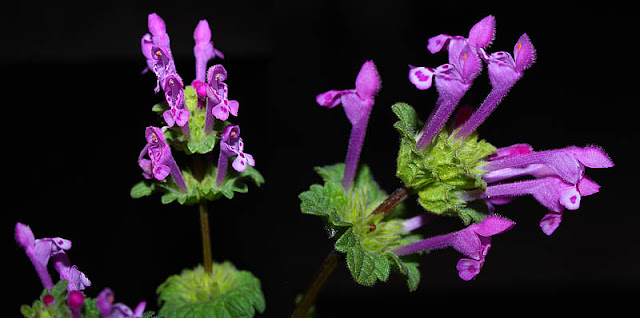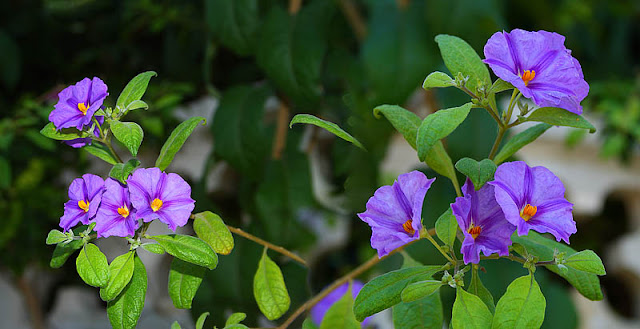 |
| Spartium junceum, Spanish Broom, Weaver's Broom flowering bushes (© LightColourShade. All rights reserved) |
Cistus (from the Greek "Kistos") is a genus of flowering plants in the rockrose family Cistaceae, containing about 20 species. They are perennial shrubs found on dry or rocky soils throughout the Mediterranean region, from Morocco and Portugal through to the Middle East, and also on the Canary Islands. For obvious reasons these flowers always put me in mind of boiled eggs.
 |
| Cistus, (rock rose) flowers. (© LightColourShade. All rights reserved) |
 |
| Cistus, (rock rose), in full bloom. (© LightColourShade. All rights reserved) |
Lamium amplexicaule (Henbit Deadnettle, Greater Henbit) is a species of Lamium native to Europe, western Asia and northern Africa.
+flowers.jpg) |
| Lamium amplexicaule (Henbit Deadnettle, Greater Henbit) flowers (© LightColourShade. All rights reserved) |
Solanum ellipticum is known as Potato Bush and under the more ambiguous name of "bush tomato". Native to Australia, the Potato Bush is a small fast-growing waxy-looking fruiting shrub in the Solanaceae family that grows next to creeks.
It fruits abundantly the year after fire or good rains. Like the other "bush tomatoes", S. ellipticum pungent smelling fruits are edible raw or cooked.
1.jpg) |
| Potato Bush flowers (Solanum ellipticum). (© LightColourShade. All rights reserved) |
Polygala myrtifolia (Augustusbossie and September bush) is a common, widespread evergreen shrub about 0.6 to 1.8 m in height with myrtle like leaves that blooms throughout the year with a peak in spring (southern hemisphere spring). The fruit is a small, winged capsule.
All polygalas have a showy, and very distinctive brush-like tuft on the keel. The showy petals, beautifully marked with darker veins, are usually in shades of mauve or purple, but can also be pink scarlet, or white.
Polygala myrtifolia occurs naturally from the Bokkeveld Mountains near Clanwilliam in the Western Cape to Kwazulu-Natal and adapts to the different areas it grows in, from the coast to the drier inland climates. It's commonly found growing on dunes, rocky slopes, in forests, along streams, in scrub and open grassland.
In KwaZulu-Natal Polygala myrtifolia is one of the many plants known for its antibacterial, antimicrobial and antifungal properties.
Tests run by the University of Natal at Pietermaritzburg have found that aqueous extracts of P. myrtifolia showed activity against Candida albicans (which causes oral candidiasis). Anyway, to me polygala is, above all, a plant with peculiar and beautiful flowers.
.jpg) |
| Sweet pea shrub flowers (Polygala myrtifolia), 'Mariposa' (© LightColourShade. All rights reserved) |
No comments:
Post a Comment
Speak out, I'm listening.